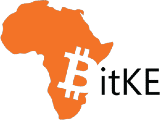The Bitcoin Lightning Network has seen growing adoption since its inception in 2018, accumulating a total value locked (TVL) of $140 million. Still this figure is relatively small when compared to Bitcoin’s substantial market capitalization of $700 billion.
Furthermore, the growth in the number of Lightning Network nodes has only increased by a modest 6% since June 2022. This indicates that there are substantial factors or challenges that have hindered its widespread adoption and expansion.

Some of the challenges facing the adoption of the payment network have been well documented within the Bitcoin community, with the main ones as follows:
1.) Channel Balancing
If Lightning Network users wish to make a payment that exceeds their channel balance, they must find a well-funded node with a direct channel to the recipient to facilitate the transaction. This process can be quite demanding and time-consuming, particularly when the recipient lacks strong connections within the Lightning Network.
In addition to the challenge of optimizing channel funding, there are also associated costs with both opening and closing channels as these actions necessitate on-chain transactions. This situation can pose significant problems if the median fee exceeds $5 or $10 as it would severely restrict access for lower-income individuals and discourage the network’s broad accessibility and reach.
2.) The Risks of Service Outage Due to Consistent Development
The Lightning Network is an evolving technology and, as such, it still carries certain security risks. One notable concern is that if a node goes offline, it becomes incapable of processing payments through the channels it is connected to.
This interruption in the payment process persists until the node returns online, potentially causing inconvenience for users during such downtime. A double spending attack could potentially occur if a node remains offline for an extended period, resulting in the node providing an inaccurate state and inadvertently returning coins to the other party involved in the transaction.
3.) Poor Integration with Existing Systems and Lack of Education
Achieving widespread adoption of any payment system necessitates acceptance by a significant number of merchants and a high level of user awareness. However, the Lightning Network encounters challenges in both of these aspects.
The adoption of the Lightning Network by merchants is constrained by various factors, including:
- The complexities associated with integrating it into existing payment systems
- Apprehensions related to Bitcoin’s price volatility, and
- Uncertainties regarding regulatory compliance
These hurdles can hinder businesses from readily embracing this technology for payment processing.
Furthermore, user awareness about the Lightning Network’s benefits and how to effectively use it remains relatively low. Educating users about the advantages and simplicity of Lightning payments is crucial to addressing this limitation and encouraging wider adoption.
In addition to the more evident issues like channel rebalancing and security risks, developers are actively working on solutions for payments that can be executed even when the receiver is offline. This concept, known as asynchronous (async) payments, aims to enhance the functionality and flexibility of the Lightning Network, making it more robust and user-friendly.

The network is still be very popular because of its utility and many more nodes and players keep entering the network. In July 2023, the world’s largest crypto exchange, Binance, integrated lightning, while Coinbase is actively working on its own integration.
Despite the challenges observed in this article, the network’s advantages are too significant as signaled by the growing network participants and major players joining. According to Glassnode, the median fee rate, or the cost of sending value across the Lightning Network, is 0.0029% – 1,000 times cheaper than that of Mastercard or Visa payment processors.
The median fee rate, or the fee charged per 1 BTC sent across the Lightning Network, is 3,000 satoshis, which is ‘equivalent to $0.84 to send $28,800 worth of value […,] which comes down to a fee of 0.0029%.
Follow us on Twitter for the latest posts and updates
Join and interact with our Telegram community
_____________________________________
_____________________________________







